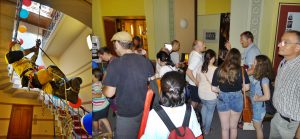Quest members from Mainz have published an article about the analysis of lignin oxidation products as vegetation proxies in speleothem and cave drip water samples in the discussion part of Biogeosciences. They developed a sensitive method to analyse the lignin composition of organic traces contained in speleothems. Lignin is a main constituent of woody plants and its composition contains information about the type of vegetation. This method offers new possibilities to reconstruct the vegetation of past millenia since it combines the advantages of lignin analysis as a highly specific vegetation biomarker with the benefits of speleothems as unique terrestrial climate archives.
Further reading:
https://www.biogeosciences-discuss.net/bg-2018-253/
